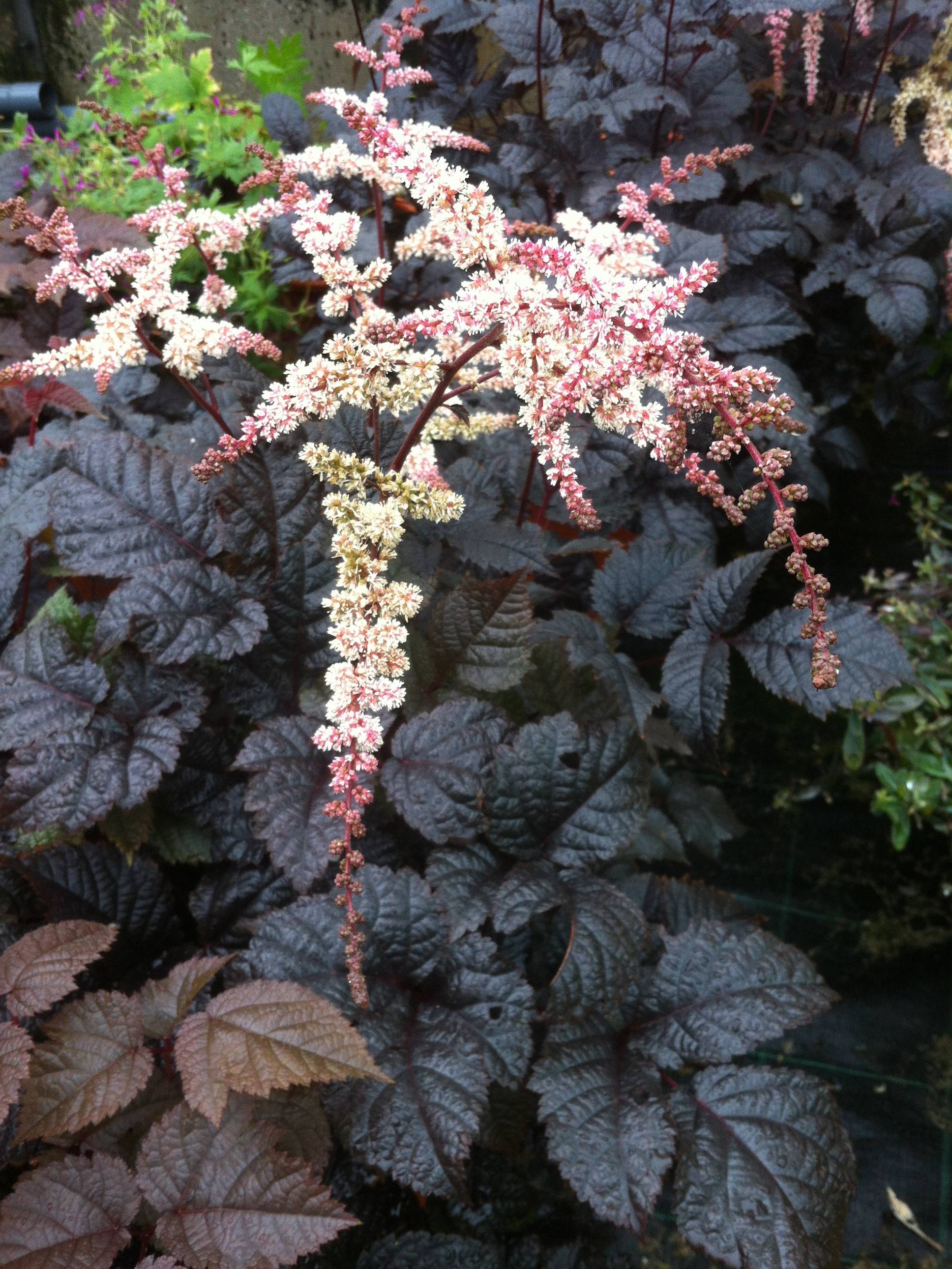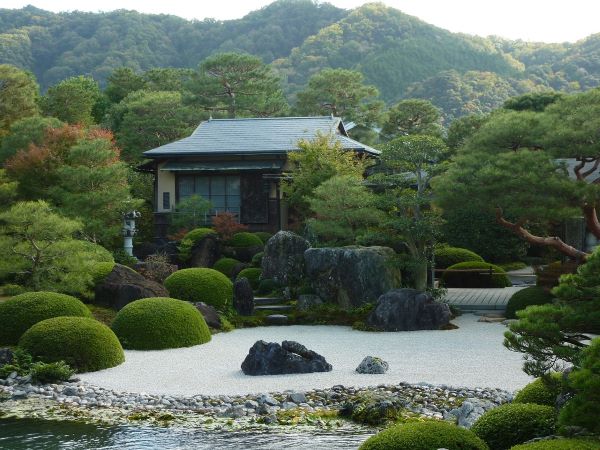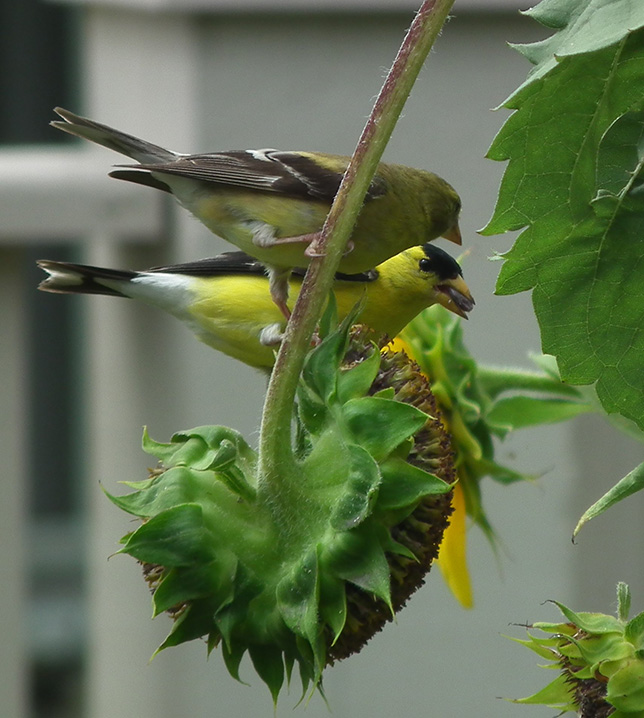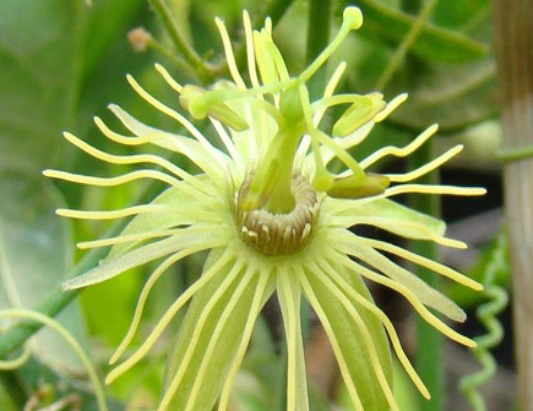Goth Gardens: Embrace the Dark Side
Gardening is often seen as a pursuit of light and color, with vibrant flowers and lush greenery taking center stage. But there’s a growing movement that flips this notion on its head—Goth Gardening. This trend is all about embracing the darker side of nature, blending deep, moody colors, and mysterious, shadowy elements into your outdoor space. While it might sound unconventional, Goth Gardening is a trend that anyone can embrace, and here's why you’ll love incorporating it into your existing landscape.

A Brief History of Goth Gardening
The Goth Gardening trend finds its roots in the broader Gothic subculture, which has long appreciated the dark, the mysterious, and the romantic. Inspired by Gothic literature, architecture, and fashion, this gardening style emerged as a natural extension of the desire to create spaces that reflect these themes.
Though the term “Goth Gardening” might be relatively new, the concept isn't entirely modern. In Victorian England, for example, mourning gardens were popular, often featuring dark flowers and foliage to reflect the somber mood. Similarly, Gothic architecture with its pointed arches, gargoyles, and stone carvings often influenced garden design, leading to spaces that felt both grand and a little spooky. Today, gardeners taking inspiration from these historical practices embrace non-traditional plants and designs to create spaces that are as hauntingly beautiful as they are unique.
Why Goth Gardening is for Everyone
- It’s Incredibly Versatile: Goth Gardening isn’t just for those with a penchant for the macabre. The trend’s versatility makes it easy to integrate into any garden style, whether you prefer a modern, minimalist look or a more traditional, cottage-style garden. The key to Goth Gardening is not about creating a space that’s dark and dreary, but one that is rich with contrast, texture, and depth. By adding a few dark-hued plants, incorporating gothic-inspired hardscaping, or simply playing with shadows and light, you can create a space that feels unique and deeply personal.
- It’s Surprisingly Relaxing: There’s something inherently calming about a garden that plays with shadows and darker tones. The deep purples, blacks, and rich burgundies found in a Goth Garden evoke a sense of tranquility, making your outdoor space a perfect retreat from the chaos of daily life. Imagine sitting in a shaded corner, surrounded by dark foliage and the gentle trickle of a water feature—it’s the ideal setting for relaxation and reflection.
- It Encourages Creativity: Goth Gardening is all about breaking the rules and letting your imagination run wild. Whether you’re planting a border of almost-black flowers or designing a moonlit garden that comes alive at night, this trend allows you to express yourself in ways that traditional gardening might not. You can experiment with unusual plant combinations, dramatic lighting, and gothic-inspired garden structures to create a space that’s truly one-of-a-kind.
- It’s Perfect for Any Size Garden: Whether you have a sprawling estate or a small urban patio, Goth Gardening can work for you. In larger spaces, you can create entire sections dedicated to the gothic theme, complete with dark hedges, pergolas, and water features. In smaller gardens, a few well-chosen plants, a dark-painted fence, or a gothic-style statue can make a big impact. Even container gardens can be transformed with black petunias, dark succulents, and antique-looking planters.

Design Elements of Goth Gardens
Creating a Goth Garden is all about balance—combining elements that evoke a sense of mystery with those that make the space inviting. Here are some design basics to help you get started:
- Dark Colors: The foundation of any Goth Garden is its color palette. Opt for plants with dark, rich colors—think black, deep purples, and burgundy. Complement these with silver, gray, and white to create contrast. Intense blue or red flowers can also be intriguing, but limit the different colors that are blooming at one time. For hardscaping, consider using dark tumbled stones, wrought iron, and aged wood to enhance the moody vibe. Cobblestone paths or gravel walkways in dark hues can guide visitors through the garden, enhancing the theme.
- Unique Plant Structure: Victorian gardens and containers traditionally featured substanial large-leaved tropical plants. Think elephant ears, bananas, fan palms, giant rhubarb (Gunnera manicata), leopard plant (ligularia), castor bean plant (Ricinus communis), or even squash or zucchini plants! Weeping trees and shrubs, or those with curly or twisted stems or drooping flowers play up the mysterious ambience, as do plants with highly unusual flower shapes like passion vine (Passiflora spp.), pipe vine (Aristolochia spp.), Jack-in-the-pulpit (Arisaema triphyllum), flame lily vine (Gloriosa superba), cleome, and crown imperial fritillaria. Consider also plants with interesting seedheads like many clematis, large-flowered Allium, Eryngium, Baptisia, etc.
- Light and Shadow: The interplay of light and shadow is crucial in creating the right mood. Position plants with dark foliage in spots where they can cast eerie shadows, catch the dappled sunlight or will be backlit by the rising or setting sun. In the evening, use lanterns, candles, fairy lights, or other low lighting to create an enchanting glow. Uplighting inividual specimens emphasizes interesting branch or leaf structure--experiment with both front and back lighting to determine the best effect.
- Create a Sense of Enclosure: A Goth Garden should feel like a private, secret space. Use hedges, tall plants, or trellises to create natural walls that enclose your garden, giving it a secluded, intimate feel. An ogee style gazebo or pergola echoes the Gothic period style, creating an inspired garden room.
- Gothic Architectural Elements: Architectural features can elevate your Goth Garden from merely dark to truly gothic. Consider incorporating elements like black metal vine-covered arches or obelisks. Statues or gargoyles can also add a touch of drama, while a weathered stone bench provides a place to sit and soak in the atmosphere.
- Water Features: While not a necessity, water features like dark, still ponds or bubbling fountains add a layer of tranquility while enhancing the garden's mysterious vibe. A small, reflective pool, or even just a large birdbath, can mirror the moonlight, adding a sense of depth and calm to the space.
Incorporating Goth Garden into Your Existing Landscape
Integrating a Goth Garden into your current landscape doesn’t require a complete overhaul. Instead, think of it as adding layers of depth and intrigue to your existing garden. Here’s how to do it:
- Start Small with Containers and Accents: If you’re hesitant about diving headfirst into the Goth Gardening trend, start small. Dark-colored containers filled with black or burgundy plants can be placed on your patio or along pathways. Gothic-inspired garden ornaments, like wrought iron lanterns or a stone gargoyle, can add a touch of mystery without overwhelming your space. Try dedicating just one corner or small, secluded area that contrasts with the rest of your garden, then sprinkle in a few dark foliaged plants or similar flowers nearby to create a transition.
- Incorporate Dark Foliage and Flowers: Look for opportunities to weave dark foliage and flowers into your existing garden beds. Black Mondo Grass, Heuchera ‘Obsidian,’ and Queen of Night Tulips are all excellent choices that blend well with lighter, more traditional plants. Consider planting these darker varieties alongside silver or white plants to create contrast and highlight the unique colors. You might try this for just one blooming season perhaps, with Persian Lily (Fritillaria persica) and black spring tulips blooming amongst dark ajuga, euphorbia, and heucheras, with flowers in other colors arriving later.
- Play with Lighting: Lighting is a crucial element in Goth Gardening. Subtle, low lighting can create an eerie, enchanting glow, especially in the evening. Use lanterns, fairy lights, or ground-level lighting to illuminate pathways, highlight dark corners, or cast shadows on statues and structures. The interplay of light and shadow is what gives a Goth Garden its magical, otherworldly feel.
- Add Gothic Structures: Garden structures like arches, pergolas, and trellises can be transformed into gothic focal points with a few design tweaks. Consider painting them in dark colors or allowing vining plants like Japanese climbing hydrangea or dark-hued clematis to cover them. If you’re up for a more significant change, installing a wrought iron gate or a small gazebo can create a gothic “room” within your garden that’s perfect for contemplation or quiet conversation.
- Create a Focal Point: A goth-inspired focal point can be as simple or elaborate as you like. It might be a dark-colored bench beneath a canopy of trees, a stone birdbath surrounded by black and purple flowers, or a small pond with dark stones and aquatic plants. This focal point doesn’t have to dominate your garden but should draw the eye and invite closer inspection.
- Embrace the Shadows: If your garden already has shaded areas, Goth Gardening is the perfect way to make the most of them. Plant dark-leaved ferns, hostas, hellebores, epimediums and heucheras in these areas, and let moss grow naturally on stone paths or walls. The shade will enhance the deep colors of the plants and create a sense of seclusion and mystery. Add one or just a few (depending on the size of the area) white-blooming or bright silver-foliaged plants to create dramatic contrast without overwhelming the scene--like a moon in a dark night sky.
- Integrate with Natural Surroundings: If your garden is surrounded by trees or natural landscapes, use these to your advantage. Incorporate the existing natural elements into your goth garden design, using them as backdrops for dark plants or gothic structures. This helps the garden blend into its surroundings while still standing out.
Goth Gardening is about more than just a color palette—it's a way to create a space that feels mysterious, intimate, and deeply personal. Whether your garden is bathed in sunlight or nestled in shade, you can bring elements of this trend into your landscape, creating a space that reflects your love for the dark and the dramatic. With thoughtful design, the right plants, and well-chosen hardscaping, you can transform your garden into a sanctuary that celebrates the beauty of shadows and light.
So, why not let your garden embrace its dark side? With a touch of gothic inspiration, you can create a space that is both hauntingly beautiful and irresistibly inviting.
Goth Garden Plant Suggestions:
Trees and Shrubs with Dark Leaves or Berries
Perennials For with Dark Foliage or Dark Flowers for Shadier Spots
Perennials with Dark Foliage or Dark Flowers for Sunnier Spots
Dark-toned Grasses
Dark Foliaged or Dark Flowered Annuals, Biennials, and Tender Perennials
Edibles with Dark Foliage or Fruit
Bulbs, Tubers, and Rhizomes
*Photo courtesy of Ball Horticulture, Inc., www.ballhort.com.
**Photo courtesy of Proven Winners, www.provenwinners.com
***Photo courtesy of Greenleaf Nursery, www.greenleafnursery.com
****Photo courtesy of Top Tropicals, Inc., www.toptropicals.com
Thumbnail photo of Solar Tower Ipomoea courtesy Ball Horticulture

























































































